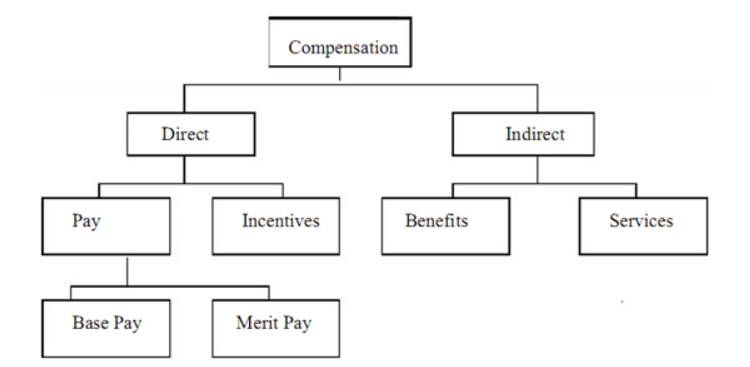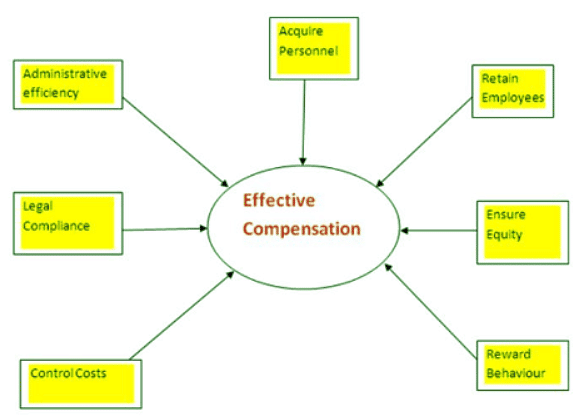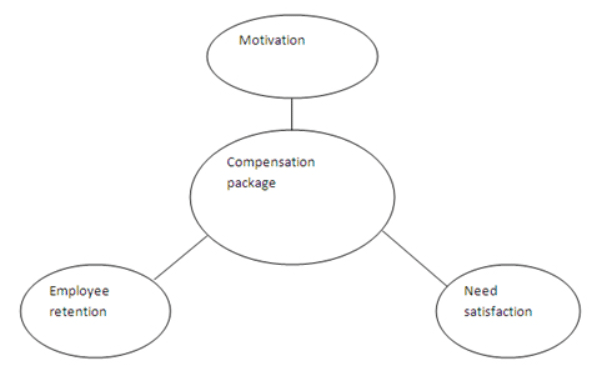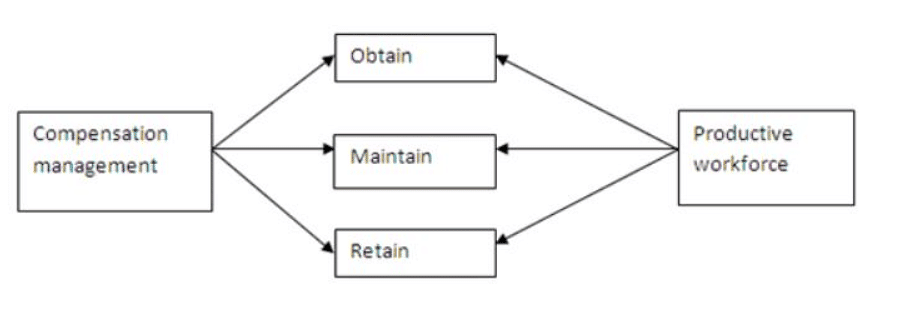Compensation Management and Benefits | Management Optional Notes for UPSC PDF Download
Compensation Management Basics
- Essential HR Function: Compensation management and benefits are crucial aspects of international companies' HR teams.
- Recognizing Employee Contribution: Compensation is a way to acknowledge and reward employees for their contributions to the company's business processes.
- Financial Rewards Definition: Compensation encompasses all financial rewards employees receive, starting from their employment.
- Significance in Employee Life: Holds a significant position in both personal and professional aspects of an employee's life.
- Managerial Cost Aspect: Represents a substantial cost for managers.
- Key HR Tool: Compensation is a major tool in HR that organizations use to manage their employees.
- Money's Worth and Talent Retention: To ensure the organization gets value for its money and retains skilled employees, the compensation system should not operate in isolation.
- Alignment with Organization's Goals: It is crucial for the organization to align its compensation system with overall goals, strategies, and HR strategy.
- Organized Practice: Compensation Management is a structured approach that aims to balance the relationship between work and employees.
- Balancing Act: Involves providing both monetary and non-monetary benefits to employees.
- Monetary Components: Monetary benefits include bonuses, profit sharing, overtime pay, recognition rewards, and sales commission.
- Non-Monetary Perks: Compensation extends to non-monetary perks like a company-paid car, housing, and stock options.
- Motivational Role: Acts as a motivator for employees, fostering increased organizational effectiveness.
- Negative Impacts of Compensation Displeasure: Displeasure with compensation can lead to absenteeism, high turnover, job dissatisfaction, low performance, strikes, and grievances.
- Holistic Employee Satisfaction: A well-structured compensation system contributes to overall employee satisfaction and well-being.
Importance of Compensation Management
- Industry-wide Relevance: Good compensation is crucial across all industries, ensuring proper acknowledgment of workers' contributions.
- Positive Impact on Competence: Acts as a positive influence on workers' competence, motivating them to give their best and meet specific standards.
- Basis of Pleasure and Satisfaction: Forms a foundation for workers' satisfaction, minimizing labor turnover, and promoting organizational stability.
- Enhanced Job Evaluation: Improves the job evaluation process, leading to more realistic and achievable standards.
- Compliance with Labour Acts: Planned to adhere to various labor acts, preventing conflicts between worker unions and management.
- Building Peaceful Relationships: Establishes peaceful relationships between employers and employees, fostering a harmonious work environment.
- Promoting Self-esteem and Cooperation: Creates an atmosphere of self-esteem, efficiency, and cooperation among workers, providing job satisfaction.
- Motivator for Increased Efficiency: Acts as a motivator, encouraging employees to enhance efficiency and showcase their excellence.
- Opportunities for Growth: Provides growth and development opportunities for deserving employees.
Understanding Compensation in Organizations
- Definition: Compensation is often defined as pay, reward, remuneration, or salary and wage management.
- Interchangeable Terms: These terms are frequently used interchangeably within organizations.
- HR Management Function: In the organizational context, compensation is a vital function in human resource management, involving the planning, organization, and control of various pay systems.
- Types of Payments: Encompasses direct and indirect payments, monetary and non-monetary rewards, and cash and non-cash payments.
- Rewarding Employee Performance: Compensation serves as a means to reward employees for their performance and service within the organization.
- Measure of Justice: In this study, compensation is viewed as a measure of justice, reflecting fairness in reward distribution.
- Financial Security Significance: Typically, compensation represents a major source of employees' financial security within organizations.
Understanding Employee Benefits
- Definition: Benefits are defined as a component of the total compensation package provided to employees, distinct from pay for time spent on work.
- Group Membership Rewards: They are group membership rewards that offer security for both the workforce and their family members.
- Non-Compensation Aspect: Benefits are considered non-compensation and are not directly tied to time spent working.
- Mandated by Law: Some benefits, like social security, unemployment compensation, and worker compensation, are mandated by law.
- Range of Employee Benefits: Employee benefits encompass pension, health insurance, fringe benefits, and welfare, among others.
- Integral to Compensation Package: Benefits play a crucial role as part of an employee's total compensation package.
- Historical Context: Benefits packages gained prominence after World War II when wage controls made competitive salaries more challenging.
- Payment or Entitlement: Benefits can be viewed as payments or entitlements under insurance policies, employment agreements, or public assistance programs.
- Expression of Justice: Benefits may be considered an expression of justice in society, contributing to the well-being of individuals.
- Definition of Benefits: Benefits are forms of value, aside from payment, provided to employees in recognition of their contributions to the organization.
- Components of Employee Benefits: Employee benefits encompass disability income protection, retirement benefits, work-life balance (sick leave, vacation, etc.), and various allowances (dental, medical, transportation, housing, etc.).
- Changing Landscape: Due to increasing costs, the range and options of benefits are evolving rapidly, with flexible benefits plans becoming more common.
- Attraction and Retention Tool: Employers use benefits to attract and retain skilled workers, while employees rely on benefits for financial security, including medical subsidies, vacations, and retirement.
- Link to Seniority: Tying benefits such as pension and holidays to seniority encourages employee loyalty and deters job changes.
- Protection Against Risks: Benefits are designed to protect employees and their families from challenges arising from sickness, accidents, or retirement.
- Work-Life Balance Impact: Work-life balance components like temporal flexibility, leave benefits, and interpersonal relationships can influence employee retention.
- Income Protection: Income protection safeguards employees from financial risks associated with illness, disability, or inability to work.
- Financial Relief: Allowances, a crucial component of benefits, alleviate the financial burden on employees and can be considered an additional form of salary.
- Overall Organizational Impact: Benefits play a significant role in influencing employee satisfaction, loyalty, and overall organizational well-being.
Navigating Compensation Management
- Compensation Overview: Compensation refers to the extrinsic rewards employees receive in exchange for their work, encompassing base wage or salary, incentives, bonuses, and benefits.
- Labor Management Challenges: Major labor-management conflicts often revolve around compensation-related issues.
- Attraction and Retention Tool: Compensation is a critical factor in attracting and retaining top talent, providing a competitive edge in a highly competitive global environment.
- Strategic Importance: Compensation Management is strategic, allowing organizations to distinguish their payment strategies from competitors while maintaining flexibility, control, and cost-effectiveness.
- Strategic Remuneration Planning: It provides a toolset for strategic remuneration planning, offering insights into organizational culture, pay strategies, and empowering line managers with flexible budget control.
- Total Compensation Control: Compensation management enables control over bottom-line expenditures, ensuring a competitive and motivating compensation structure. This includes fixed pay, variable pay, stock options, merit increases, and promotions—comprising total compensation.
- Flexible Approach: It allows organizations to tailor compensation strategies to align with their unique goals, culture, and industry dynamics, fostering a dynamic and responsive approach.
- Cost-Effective Measures: Compensation Management aims at achieving cost-effectiveness, ensuring that the organization's financial resources are allocated efficiently to reward and motivate employees.
- Strategic Alignment: By aligning compensation strategies with organizational objectives, Compensation Management becomes a powerful driver in achieving business goals and maintaining a motivated workforce.
- Adaptable Framework: The framework of Compensation Management is adaptable, allowing organizations to respond to dynamic market conditions and changing employee expectations.
Decoding Employee Compensation
- Total Compensation Breakdown: An employee's total compensation is composed of four key components, each contributing to the overall remuneration package.
- Base Compensation: The primary and often predominant component is base compensation, encompassing fixed pay disbursed regularly as salary or wages.
- Allowances: Allowances form the second component and include various forms like House Rent Allowance (HRA), Dearness Allowance (DA), and City Compensatory Allowance (CCA).
- Incentive Pay: The third component involves incentive pay structures designed to reward exceptional performance. Examples include performance-linked bonuses and profit-sharing arrangements.
- Benefits or Perquisites: The fourth component comprises benefits or indirect compensation, commonly known as perquisites. This includes company accommodation, company car, paid holidays, club memberships, and stock options.
- Variable Proportions: The relative proportion of each compensation component varies from one organization to another, reflecting diverse approaches to employee remuneration.
- Economic, Social, and Psychological Impact: Compensation holds significant importance for employees, impacting their economic status, social standing, and psychological well-being.
- Standard of Living: The compensation package determines an employee's standard of living, influencing lifestyle choices, and overall financial security.
- Societal Positioning: Beyond individual considerations, compensation also contributes to an employee's positioning within society, influencing how they are perceived.
- Holistic Impact: In summary, compensation plays a multifaceted role, affecting employees across economic, social, and psychological dimensions, making it a pivotal aspect of the employment relationship.
Types of Compensation

Compensation management involves creating an optimal pay structure that attracts, retains, and motivates capable employees while maintaining perceived fairness and employee satisfaction.
The key objectives of compensation management include:
- Enhancing employee competence and performance through a well-designed compensation system that motivates them to excel and meet set standards.
- Boosting confidence, efficiency, and cooperation among workers by ensuring just and fair compensation, leading to employee satisfaction.
- Establishing harmony in the manager-employee relationship through a sound compensation and rewards system, with collective bargaining often focusing on compensation-related issues.
- Fostering a positive work environment by providing satisfactory compensation and rewards, reducing labor turnover, and promoting organizational stability in the marketplace.
- Enabling industry growth and strategy development by having the support of a skilled, talented, and content workforce.
- Demonstrating organizational success and prosperity through an effective compensation system.
- Assessing the success and stability of an organization based on the pay packages it offers to its employees.
Objectives of Compensation Management

Components of Compensation
The financial compensation package for employees encompasses various components:
- Basic Pay: This forms the primary component of the pay package. For blue-collar workers, basic wage may be tied to the work done (price wage system), while for white-collar employees, supervisory staff, and managers, basic salary is typically time-bound. Job evaluation, a systematic process, is often used to determine the relative worth of a job and set the basic pay.
- Allowances: In addition to basic pay, various allowances are provided, including:
- Dearness Allowance (DA): Given to protect real income against inflation, usually calculated as a percentage of basic pay.
- House Rent Allowance (HRA): Provided when employers do not offer living accommodation; calculated as a percentage of basic pay, with the percentage varying based on the city's classification (10% to 35% for government employees).
- City Compensatory Allowance (CCA): Paid in metros and other high-cost cities as a fixed amount per month.
- Transport Allowance/Conveyance Allowance (TA): A fixed sum paid monthly to cover part of the traveling charges.
- Incentives: Performance-linked remuneration is employed to motivate employees to enhance their performance. This includes both individual and group incentives, with examples such as bonuses, profit-sharing, and commissions on sales.
- Fringe Benefits/Perquisites: Senior managers often receive additional benefits, including:
- Provident funds, pensions, and gratuity.
- Encashment of earned leave.
- Company-provided housing and cars.
- Leave travel concession (LTC).
- Medical aid.
- Interest-free loans.
- Holiday homes.
- Entertainment perks.
- Stock options.
These components together constitute a comprehensive financial compensation package designed to attract, retain, and motivate employees at different levels within an organization.
Needs of Compensation Management
- Employee Motivation and Organizational Productivity:
- A compelling compensation package is vital for inspiring employees to boost organizational productivity.
- Motivation is a key outcome of effective compensation, encouraging employees to contribute to the success of the organization.
- Compensation's Role in Organizational Success:
- Compensation is provided as a means for employees to contribute to the organization's success.
- It plays a pivotal role in the efficient functioning of an organization and aids in the accomplishment of its goals.
- Beyond Salary:
- While salary is an integral part of the compensation system, it is not the sole factor.
- Employees have diverse psychological and self-actualization needs that extend beyond monetary considerations.
- Comprehensive Purpose of Compensation:
- Compensation serves the broader purpose of meeting various psychological and self-actualization needs of employees.
- It is designed to fulfill a spectrum of requirements beyond financial remuneration, contributing to overall employee satisfaction and motivation.

Major Phases of Compensation Management
Compensation Management consists of four phases which are shown with the help of diagram given below:
Compensation Challenges: HR professionals across companies commonly grapple with significant concerns related to compensation, with the primary issue revolving around financial aspects. Compensation structures pose a substantial challenge for human resources departments in various organizational settings. Another noteworthy concern for HR experts involves managing compensation budgets and salary considerations.
The key problems are illustrated in the figure below:
Relationship between Compensation and Benefits
- Growing Fields in HR:
- Compensation and benefits are expanding areas within Human Resources (HR).
- Employee Rewards for Satisfaction and Performance:
- Companies explore diverse ways to reward employees for enhanced job satisfaction and performance.
- Definition of Compensation:
- Compensation includes financial returns and tangible services provided to employees as part of their employment relationship.
- Topics covered: salary programs, job description-based salary ranges, merit-based programs, bonus and commission programs, long or short-term incentives.
- Employee Benefits:
- Encompass allowances, income protection, life insurance, work-life balance, and vacation.
- Benefits are non-monetary forms of value given to employees in return for their work.
- Designing Suitable Systems:
- Employers must design appropriate compensation and benefits systems for their workers to avoid negative impacts on job satisfaction.
- Dominant Tools for Organizational Goals:
- Compensation and benefits are crucial tools aligning with organizational goals; successful companies make employees partners in their success.
- Addressing Sensitivity in Compensation:
- Employee compensation can be a sensitive subject, and determining an appropriate plan is crucial.
- Understanding the financial aspects of compensation and benefits is equally important.
- Integral Part of Organizations:
- Compensation and benefits form a significant part of an organization, influencing its success and priorities.
Conclusion
In conclusion, compensation serves as a human resource tool employed by organizations to oversee their workforce, emphasizing equitable pay for the work performed. It extends beyond simple remuneration, encompassing a variety of factors. Employees often take into account aspects like professional growth opportunities, workplace culture, and additional benefits when evaluating their satisfaction with their workplace.
FAQs on Compensation Management and Benefits - Management Optional Notes for UPSC
| 1. What is compensation management and why is it important? |  |
| 2. What are the types of compensation? |  |
| 3. What are the components of compensation? |  |
| 4. Why is compensation management necessary? |  |
| 5. What are the major phases of compensation management? |  |















